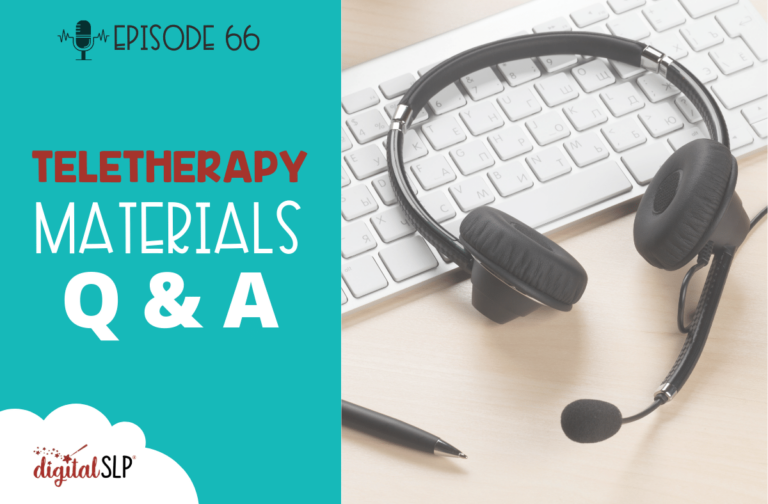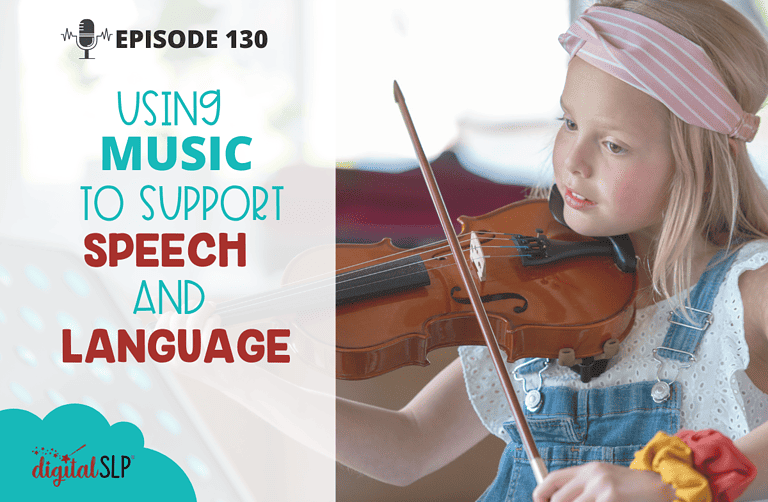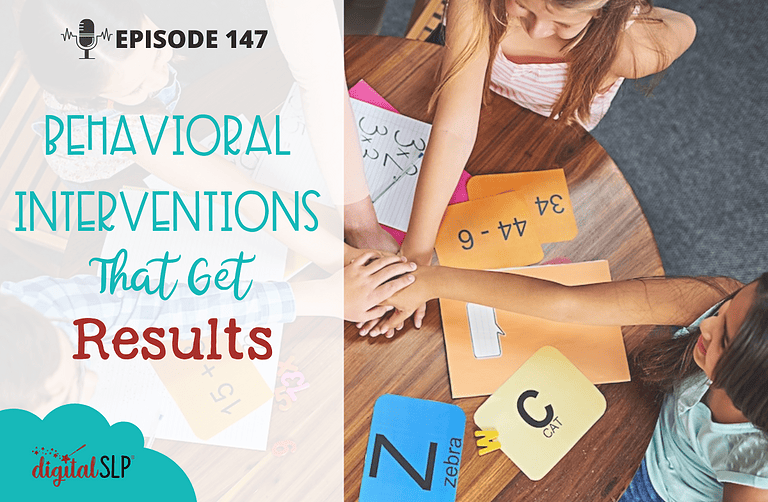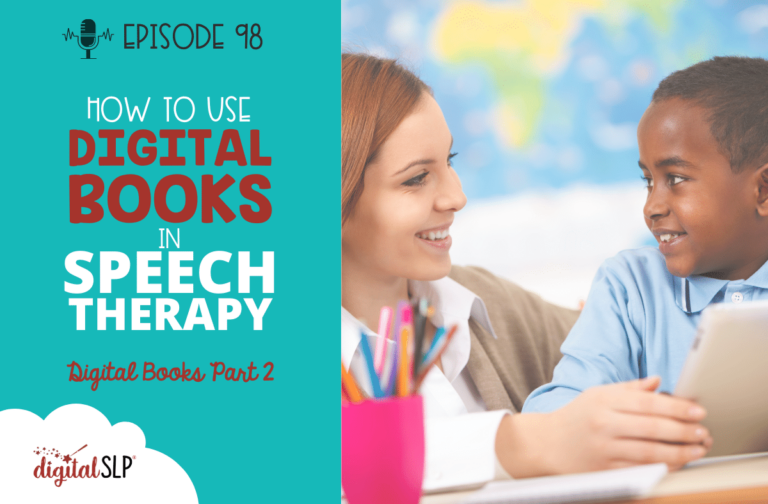What is literacy? What is our role as speech and language pathologists in supporting our students with literacy development? In this episode, I talk all about literacy and how to support our students in continued development of reading and writing skills.
What is literacy and where do we as an SLP fit in?
ASHA released an article outlining the role of the SLP with reading and writing skills for young children to adolescents (American Speech-Language-Hearing Association, 2001). We will briefly touch on the various roles and responsibilities we as SLPs have when working with children with literacy difficulties.
1. Prevention
2. Identification
3. Assessment
4. Intervention
5. Advocate
Therapy Ideas to Support Literacy Development
Now let’s talk all about resources and activity ideas you can use within sessions. We will break this down by various literacy skills.
Phonological Awareness: This is the child’s ability to recognize sounds in spoken language and to be able to manipulate those sounds. Examples of this may include rhyming, segmenting, combining sounds to form words, recognizing that words are made up of many different sounds, and understanding sounds can be represented by written letters. We will touch upon five different activities you can try with students working on phonological awareness skills.
Reading Comprehension: Reading comprehension also refers to the ability to understand and interpret information that is read. Prediction activity, five finger retell activity and the use of graphic organizers are some of the therapy ideas that help support literacy development.
Reading fluency: Reading fluency is being able to read text accurately, expressively, and quickly. Children with reading fluency difficulties may sound choppy or read very slowly. Choral reading allows the student to match your speed as well as expression while reading. Building sentence trees is also great for kids to focus on each word and slowly build speed and accuracy while reading.
Figurative Language: This is when you use a word or phrase beyond its literal definition. One type of figurative language is the use of idioms. Some fun activities that can be incorporated are idiom drawing, charades and playing the matching games.
Links & Resources
- The Digital SLP Membership
- Roles & Responsibilities of SLPs-w/Respect to Reading & Writing in Children & Adolescents
Full Transcript of Podcast: Therapy Ideas to Support Literacy Development
Episode 82: Therapy Ideas to Support Literacy Development
You're listening to the Speech Space Podcast, a podcast full of tips and resources for SLPs. I'm your host, Jessica Cassity, and this is Episode 82.
Hey there! Today we are going to be talking all about literacy, including great resources to use within your sessions, as well as our role as speech therapists in literacy development. Before we get started, I did want to mention that this podcast is brought to you by The Digital SLP membership site, which is a site that features time-saving interactive digital resources that are all teletherapy platform-friendly. You can learn more about that or sign up for a free trial by heading on over to thedigitalslp.com/digitalslp. So let's go ahead and start off by talking about what literacy is. Literacy refers to our ability to read and to write. And when we're working with children with speech and language delays, as well as speech sound disorders, they're much more likely to have difficulty with literacy skills as well. So let's go ahead and break this down even further. When children present with speech sound errors, they will often have difficulty associating letters with sounds. Now, this may cause difficulty with sounding out words or decoding, which can then impact the ability to read and write. Now, on the other hand, when children present with language delays, they often have difficulty with literacy due to lower language comprehension skills, or not understanding the various parts of language, including grammar, vocabulary, syntax, and so on. These students will generally have difficulty understanding the texts that they're reading, and you might see that they have difficulty writing as well. So where do we fit in? ASHA released an article outlining the role of the SLP with reading and writing skills for young children to adolescence. I've gone ahead and included the link to this resource in the show notes. So you can refer back to the various roles and responsibilities we have as SLPs when working with children with literacy difficulties.
So I'm going to go ahead and take a minute to summarize our general role as SLPs in literacy instruction. Okay. So first let's talk about prevention because that's really the first step. Finding ways to prevent literacy difficulties is the first step when working with our students. Providing our students with several opportunities to participate within literacy activities, both at school and home, and within therapy sessions. Those are all things that are going to help prevent future literacy difficulties. And now let's go ahead and move on to talking about identification. Identifying children at risk for reading and writing problems through preventative measures and screenings is going to help us identify those children early to begin literacy instruction. So develop screening processes so you can identify those children who are at risk. Next, we're going to move into assessment. So once you have the students who have demonstrated literacy difficulties, it's essential to complete thorough and dynamic evaluations to look at the student's overall speech and language skills. And then we've got intervention. Working with the student's entire team during intervention will allow for best outcomes of literacy development. Talk with the students' teachers and parents, to make sure that everyone is on the same page and understands the student's goals. And then lastly advocate. You know, you're the SLP who is supporting these students. However, you also are an advocate for effective literacy practices. So advocate. Talk with teachers and school administrators to ensure effective literacy instruction is in use at your facility.
Now let's talk about resources and activity ideas that you can use within your sessions. We're going to go ahead and break this down by various literacy skills. So let's start off with phonological awareness. This is the child's ability to recognize sounds in spoken language and to be able to manipulate those sounds. Examples of this might include rhyming, segmenting, combining sounds to form words, recognizing that words are made up of many different sounds, and understanding sounds can be represented by written letters. So here are five different activities that you can try with students who are working on phonological awareness skills. So the first is rhyming activities. We're going to start off with rhyming letters. So you're going to write a word at the bottom of a sheet of paper and have your student think of a word that rhymes with it. And you're going to write that word above it. And if your student can write, you can have them work on sounding out the words and writing the word, which will also support their literacy skills. And then at the end, you'll have one big ladder full of rhyming words. So you keep trying to add on to the steps of the ladder. Now, another rhyming activity you can do is to try a simple matching game. You can print out pictures and have words that rhyme within the group of pictures. And then you have the student find the two words that rhyme and then put those pictures together. So that's a simple and fun one, and the students really love that. Next, let's go ahead and talk about some segmenting activities. So you can do something called the clapping game. Now for this, you're simply going to say the word and clap out the syllables. For example, if you want to segment the word banana, you might explain to your students, you might show them how to clap for each syllable, ba-na-na. Then have the students tell you how many syllables they heard. You can also use this method to clap out each sound in the word. So for example, dog. The students would clap out and I'm going to clap here, I'm not sure how that's going to go with the mic, but I'm going to try it. D-O-G. So you're having them clap for each sound that they hear and you can change it up instead of clapping. You can have them stomp their feet. You can have them jump up and down. You can have them hum the syllables or give high five. So you can really get creative with that to make it fun and interactive. Next up is blending activities. So you can work on sounding out words and blending syllables together with your students within fun, interactive activities, like bringing a car into play. So you can write out the letters that make up a word and then take your car in a drive through the sounds with your car. So, for example, for the word dog that we just used, you'd write out the D and the O and the G, and then you would take your car and slowly drive your car passed all the letters, having the student sound out the words slowly with you. And then you could continue to repeat that each time and get a bit faster to make it a little bit trickier each time.
Let's go ahead and move on to reading comprehension, which is the ability to understand and interpret information that is read. You could start off with a prediction activity. And with this, you're going to read a story with your students, but before even reading the story, you're going to look at the cover with your student. You're going to flip through the pictures and you're going to talk about the title of the story and make predictions about what's going to happen in the story before you even read any words. Another thing that you can use for reading comprehension is graphic organizers. This allows a student to sort out their thoughts and ideas while reading books. So if your student loves to draw, incorporating drawing within the organizers can be fun. You can have them draw pictures of various scenes within the book. And, you know, that's something that allows them to get a little bit creative and have a fun time as you're discussing the book. There's also something called the five finger retell activities. So you can have your student hold up five fingers and express five different things that have happened in the story.
Now let's go ahead and move on and talk about reading fluency. Reading fluency is being able to read texts, accurately, expressively, and quickly. Children who have reading fluency difficulties may sound choppy or read very slowly or it might sound even like a little robotic-like. So one activity you can try for this is choral reading. Try reading at the same time as your student to allow the student to match your speed, as well as expression, while reading. If you are working with students in a group, you can practice choral reading together. So, you know, make it fun, read books that they like or magazines or articles that are relevant to, you know, present day and maybe something that they're interested in. So you just want to try to grab things that are going to capture their interest to make it fun. Now, another idea is to build sentence trees. This activity allows kids to focus on each word and slowly build speed and accuracy while reading. So a sentence tree would be writing out a long sentence at the bottom of a page. And on each line you would add a word. So for example, you would write, "I love to read books," at the bottom of the page, and then at the top of the page, it would say, "I," and the next line "I love," and next line, "I love to," and then the next line, "I love to read," and then finally, "I love to read books." So doing it that way gives students a chance to slowly build their speed and accuracy while reading.
The last area of literacy that we're going to discuss today is figurative language. Now this is when you use a word or phrase beyond its literal definition. So one type of figurative language that comes up a lot for us SLPs is idioms. So one fun activity to try when working on idioms is drawing it out. So have this student draw the literal meaning as well as the figurative meaning of the idiom. I find that my students have a really good time with this one and it also just helps them to remember. And not only that, it gives them something that they can take with them. I personally like to create a notebook of idioms. So we might paste or file. That, you know, might paste into a notebook or file that paper in a three ring binder that we can pull back out later to review the idioms. Another activity that's fun is charades. So you can have the student act out the idiom. Now this is especially fun for groups. It might not work as well if you're working one-on-one but it's a fun activity, nonetheless. And then a matching game. You know, that can also be an effective way to work on idioms, where you have your student find a card with the idiom and then the card with the correct meaning to match them together.
So I hope that you will be able to incorporate some of these fun activities within your therapy sessions to support your students' literacy development. I would love to hear if you use any of these or how they're working for you, you can reach me on Instagram at @thedigitalslp or you can always email me anytime at jessica@digitalslp.com. Like I mentioned at the beginning of the show, you can sign up for a 7-day free trial of The Digital SLP membership site, which is a site that features time-saving, no prep resources that are all digital and teletherapy platform-friendly. You can do that by heading on over to thedigitalslp.com/digitalslp. And then if you would like to access the show notes for today's episode, you can head on over to thedigitalslp.com/podcast, or you can also use the Bitly link by going to bit.ly/TSSEP82. All right, well, thank you so much for tuning in and I will chat with you guys again soon.













Recent Comments